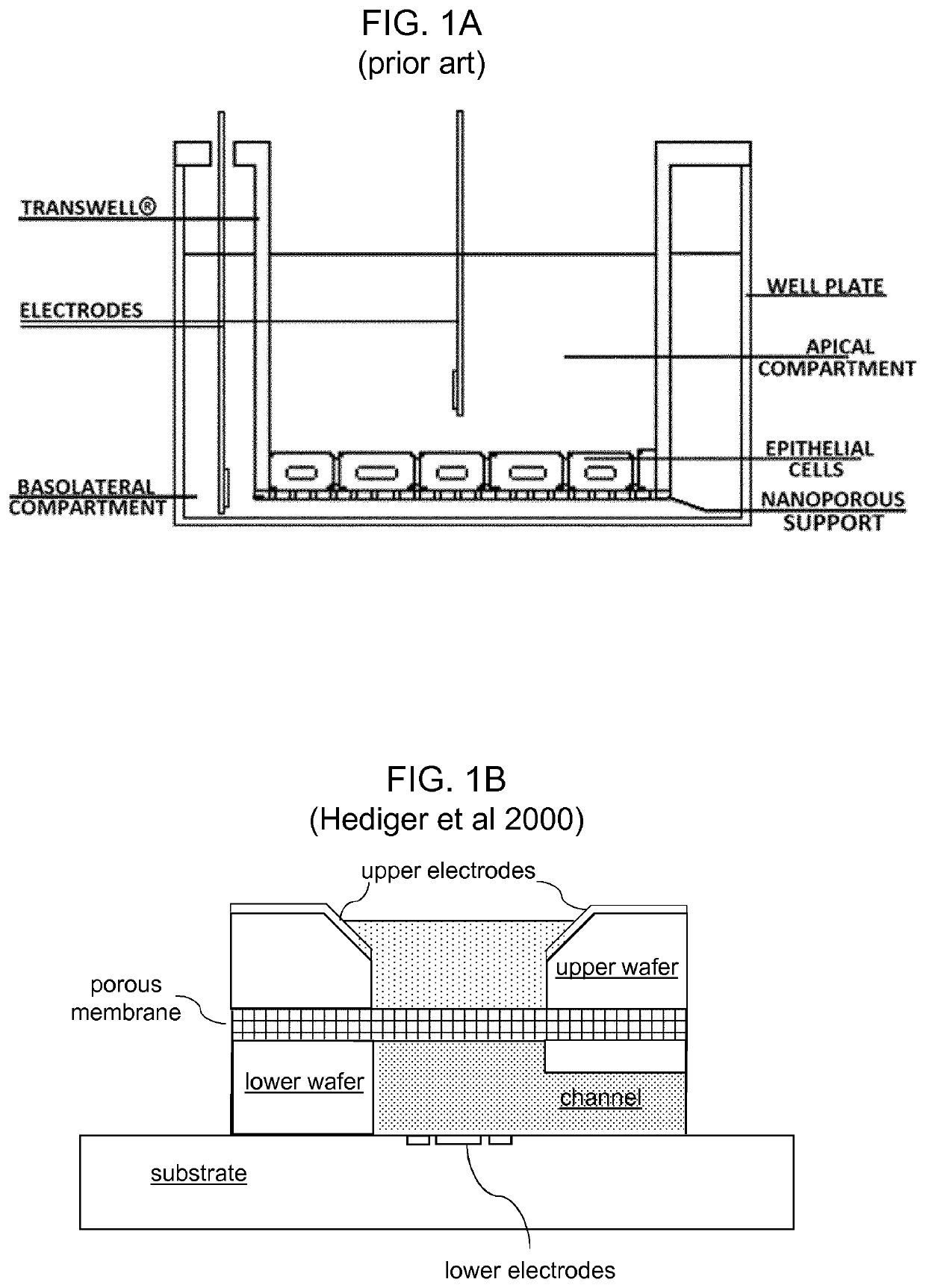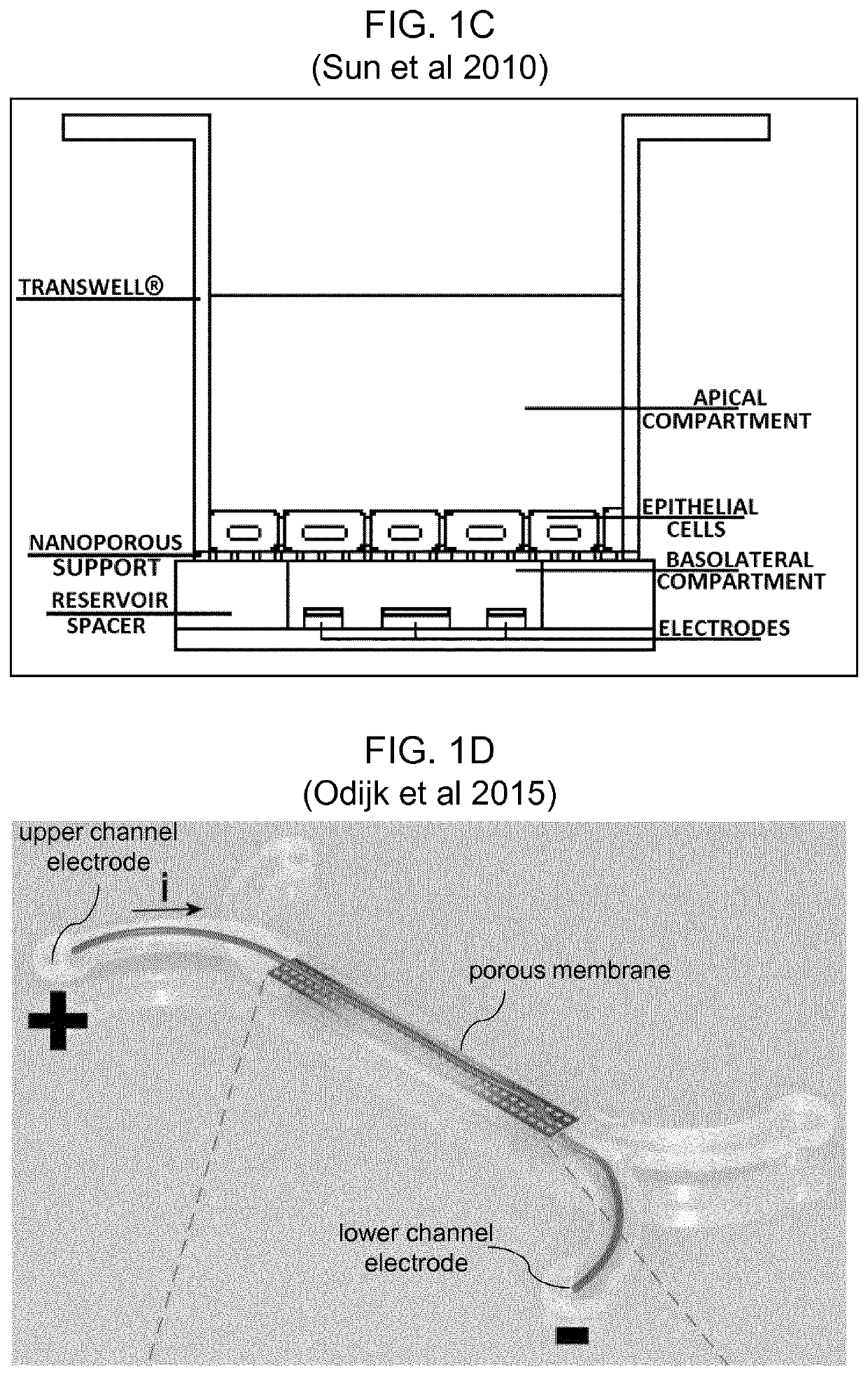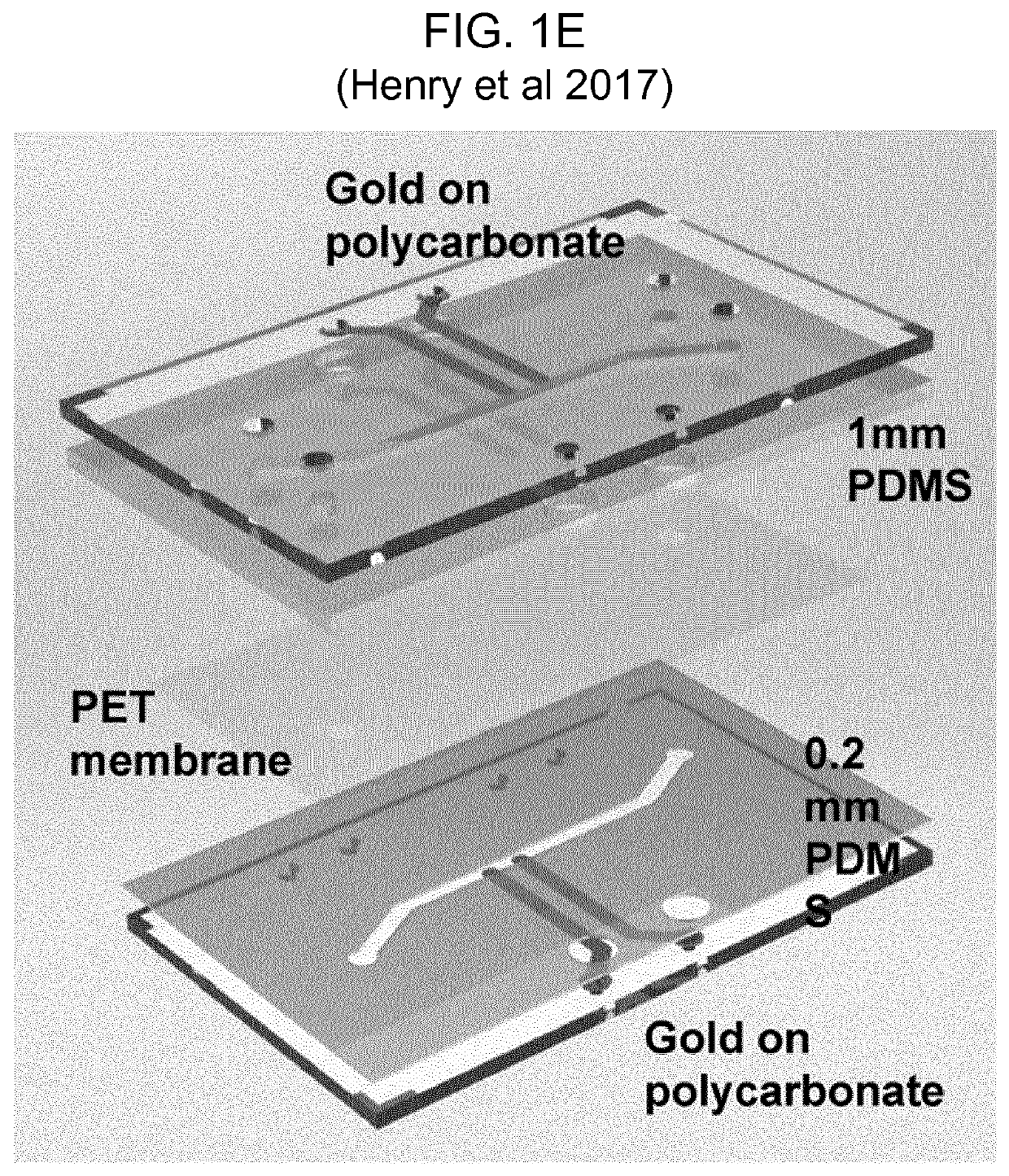Microfluidic device and method for determining cell electrical barrier properties
a microfluidic device and cell technology, applied in the field of microfluidic devices and methods for determining cell electrical barrier properties, can solve the problems of electrode blocking the field of view, the hediger device requires a complex multi-step manufacturing process, and the failure rate of candidates in clinical trial stage, so as to minimize the resistance of the apical compartment, maximize the basolateral resistance, and improve the effect of sensitivity
- Summary
- Abstract
- Description
- Claims
- Application Information
AI Technical Summary
Benefits of technology
Problems solved by technology
Method used
Image
Examples
Embodiment Construction
[0110]In airways of vertebrates, such as mammals, birds or reptiles, the epithelium is exposed to air on one side and liquid on the other. This Air-Liquid Interface (ALI) is a physiological condition that must be recreated in vitro in order to culture airway tissue, since the ALI is required to polarize and differentiate the cells which is pre-condition of culturing. The electrical resistance of the epithelial barrier formed at the ALI interface cannot be measured in situ using the classical trans-epithelium electrode configuration of FIG. 1A, because of the absence of a conducting electrolyte above the cell / tissue construct. This problem can be overcome by temporarily filling the air compartment with a liquid medium, but this is a disruptive and labour intense process.
[0111]Herein is described a simple system for in-situ electrical impedance spectroscopy (EIS) of epithelial cells cultured on porous supports which can be applied to fully submerged systems or for cells grown at the a...
PUM
| Property | Measurement | Unit |
|---|---|---|
| hole diameter | aaaaa | aaaaa |
| frequency | aaaaa | aaaaa |
| diameter | aaaaa | aaaaa |
Abstract
Description
Claims
Application Information
 Login to View More
Login to View More - R&D
- Intellectual Property
- Life Sciences
- Materials
- Tech Scout
- Unparalleled Data Quality
- Higher Quality Content
- 60% Fewer Hallucinations
Browse by: Latest US Patents, China's latest patents, Technical Efficacy Thesaurus, Application Domain, Technology Topic, Popular Technical Reports.
© 2025 PatSnap. All rights reserved.Legal|Privacy policy|Modern Slavery Act Transparency Statement|Sitemap|About US| Contact US: help@patsnap.com



